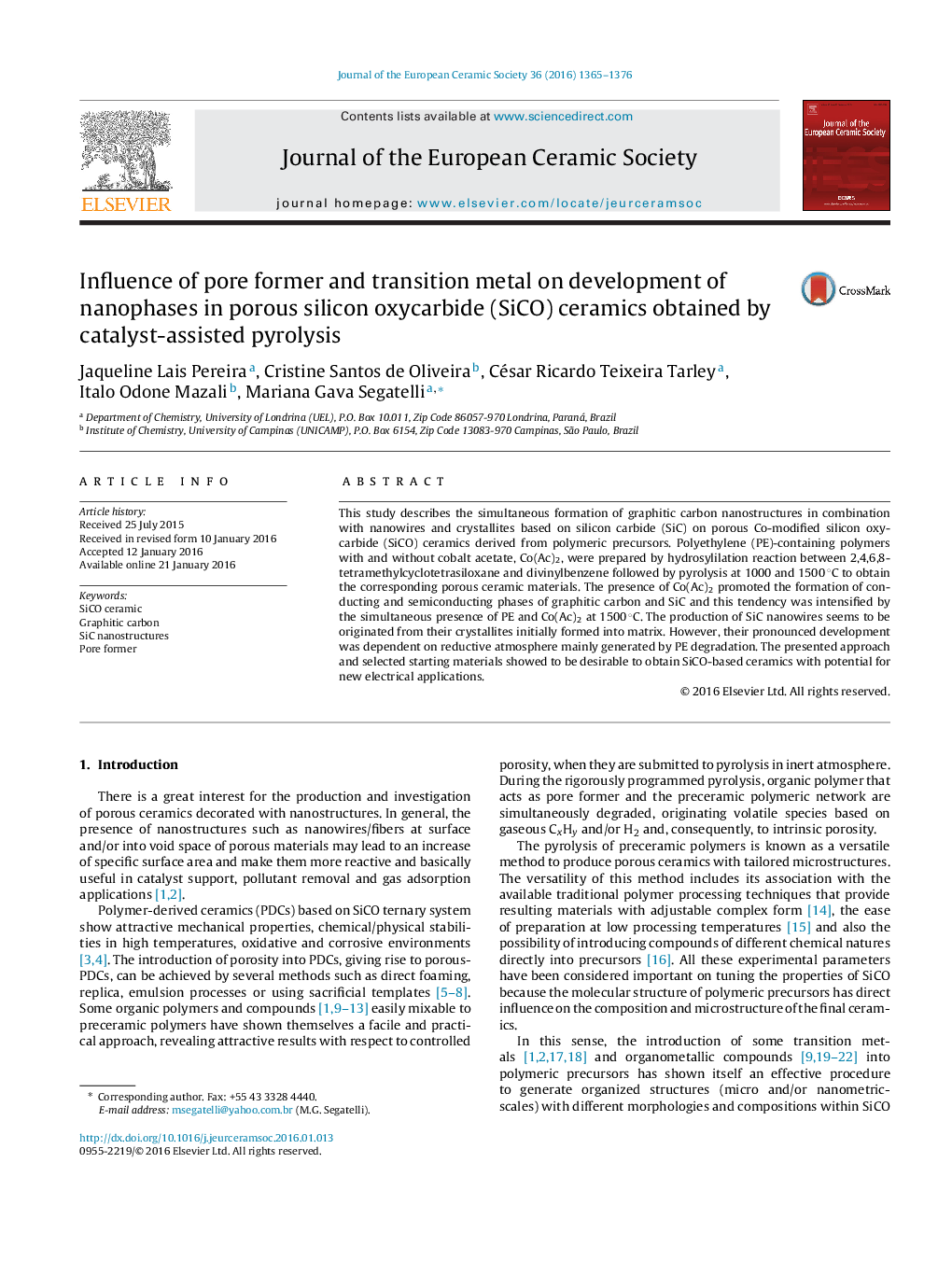| Article ID | Journal | Published Year | Pages | File Type |
|---|---|---|---|---|
| 10629314 | Journal of the European Ceramic Society | 2016 | 12 Pages |
Abstract
This study describes the simultaneous formation of graphitic carbon nanostructures in combination with nanowires and crystallites based on silicon carbide (SiC) on porous Co-modified silicon oxycarbide (SiCO) ceramics derived from polymeric precursors. Polyethylene (PE)-containing polymers with and without cobalt acetate, Co(Ac)2, were prepared by hydrosylilation reaction between 2,4,6,8-tetramethylcyclotetrasiloxane and divinylbenzene followed by pyrolysis at 1000 and 1500 °C to obtain the corresponding porous ceramic materials. The presence of Co(Ac)2 promoted the formation of conducting and semiconducting phases of graphitic carbon and SiC and this tendency was intensified by the simultaneous presence of PE and Co(Ac)2 at 1500 °C. The production of SiC nanowires seems to be originated from their crystallites initially formed into matrix. However, their pronounced development was dependent on reductive atmosphere mainly generated by PE degradation. The presented approach and selected starting materials showed to be desirable to obtain SiCO-based ceramics with potential for new electrical applications.
Keywords
Related Topics
Physical Sciences and Engineering
Materials Science
Ceramics and Composites
Authors
Jaqueline Lais Pereira, Cristine Santos de Oliveira, César Ricardo Teixeira Tarley, Italo Odone Mazali, Mariana Gava Segatelli,
